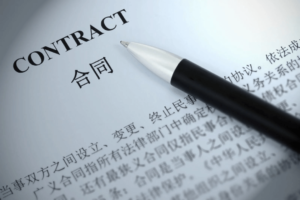Patent translation refers to the process of translating patent documents from one language to another, in order to facilitate international filings and protect intellectual property rights. It plays a crucial role in ensuring that inventors and companies can secure patent protection in multiple countries, allowing them to expand their market reach and prevent others from infringing on their inventions.
Table of Contents
ToggleKey Takeaways
- Patent translation is essential for international filings to protect intellectual property rights.
- Challenges in patent translation include legal and technical considerations, as well as translating technical terms accurately.
- Accurate patent translation is crucial to avoid legal disputes and ensure patent protection.
- Best practices in patent translation include working with experienced translators and using technology to improve efficiency and accuracy.
- Future trends in patent translation may include increased use of machine translation and artificial intelligence.
Understanding the Challenges of Patent Translation
One of the main challenges in patent translation is the language barrier. Patent documents are highly technical and complex, often containing specialized terminology and scientific concepts. Translating these documents accurately requires not only fluency in both the source and target languages, but also a deep understanding of the subject matter.
Another challenge is the technical jargon used in patent documents. These documents often contain industry-specific language and complex technical terms that may not have direct equivalents in other languages. Translators must have a strong background in the relevant field in order to accurately convey the meaning of these terms.
In addition to language and technical challenges, there are also legal requirements that must be met in patent translation. Each country has its own set of patent laws and regulations, which must be followed when translating patent documents for international filings. Failure to comply with these requirements can result in rejected applications or legal disputes.
Cultural differences can also pose challenges in patent translation. Different countries have different legal systems and cultural norms, which can impact the way patent documents are written and interpreted. Translators must be aware of these differences and ensure that the translated documents are culturally appropriate and legally valid.
Importance of Accurate Patent Translation
Accurate patent translation is essential for several reasons. Firstly, it helps to avoid legal disputes. Inaccurate or poorly translated patent documents can lead to misunderstandings or misinterpretations, which can result in legal challenges or disputes over the validity of a patent. By ensuring that patent documents are accurately translated, inventors and companies can minimize the risk of legal issues.
Secondly, accurate patent translation is crucial for protecting intellectual property rights. Patents are legal documents that grant inventors exclusive rights to their inventions. In order to enforce these rights, it is important that patent documents are accurately translated and clearly convey the scope and details of the invention. This ensures that others cannot infringe on the patent or claim ownership of the invention.
Finally, accurate patent translation is necessary for ensuring global market access. By translating patent documents into multiple languages, inventors and companies can secure patent protection in different countries, allowing them to expand their market reach and take advantage of business opportunities around the world. Without accurate translation, they may be limited to operating in a single country or region.
Legal and Technical Considerations in Patent Translation
When translating patent documents for international filings, there are several legal and technical considerations that must be taken into account. Firstly, translators must be familiar with the patent laws and regulations of both the source and target countries. Each country has its own requirements for patent applications, including specific formatting and documentation requirements. Translators must ensure that the translated documents meet these requirements in order to avoid rejection.
In addition to legal considerations, there are also technical specifications and requirements that must be met in patent translation. Patent documents often contain detailed descriptions of inventions, including technical drawings and specifications. Translators must have a strong understanding of the relevant technical field in order to accurately convey this information in the target language.
Formatting and layout guidelines are also important in patent translation. Patent offices often have specific guidelines for how documents should be formatted and organized. Translators must ensure that the translated documents adhere to these guidelines in order to avoid delays or rejections.
Challenges in Translating Technical Terms
One of the biggest challenges in patent translation is dealing with complex terminology. Patent documents often contain highly specialized terms that may not have direct equivalents in other languages. Translators must have a deep understanding of the subject matter in order to accurately convey the meaning of these terms.
In addition to complex terminology, patent documents also use industry-specific language. Each industry has its own set of terms and phrases that may not be familiar to translators who are not specialized in that field. Translators must have a strong background in the relevant industry in order to accurately translate these documents.
Scientific and engineering concepts can also pose challenges in patent translation. Patent documents often describe inventions that are based on scientific principles or engineering techniques. Translators must have a solid understanding of these concepts in order to accurately convey the technical details of the invention.
The Role of Patent Translation in Intellectual Property Protection

Patent translation plays a crucial role in protecting intellectual property rights. By accurately translating patent documents, inventors and companies can ensure that their inventions are protected from infringement and unauthorized use.
One of the main risks of inaccurate patent translation is patent infringement. If a patent document is poorly translated or contains errors, it may not accurately convey the scope and details of the invention. This can leave loopholes for others to exploit, potentially leading to infringement and loss of exclusivity for the inventor.
Patent translation is also important for patent licensing and transfer. When inventors or companies want to license or transfer their patents to others, accurate translation is necessary to ensure that all parties understand the terms and conditions of the agreement. This helps to prevent misunderstandings or disputes that could arise from language barriers or inaccuracies in translation.
In addition, accurate patent translation is crucial for patent litigation and enforcement. In the event of a legal dispute over a patent, accurate translation of the patent documents is essential for presenting evidence and making arguments in court. Inaccurate translation can undermine the credibility of the evidence and weaken the case.
Best Practices in Patent Translation for International Filings
To ensure accurate and effective patent translation for international filings, it is important to follow best practices. Firstly, it is recommended to work with professional translators who have expertise in patent translation. These translators have the necessary language skills and subject matter knowledge to accurately translate patent documents.
Thorough quality checks should also be conducted to ensure the accuracy of the translated documents. This can include proofreading, editing, and reviewing by multiple translators or experts in the field. Quality checks help to identify and correct any errors or inconsistencies in the translation.
Adhering to industry standards and guidelines is also important in patent translation. Each country may have its own specific requirements for patent applications, including formatting and documentation guidelines. Translators must ensure that the translated documents meet these requirements in order to avoid rejection.
Tools and Technologies for Effective Patent Translation
There are several tools and technologies available that can help facilitate effective patent translation. Translation memory software is one such tool that allows translators to store and reuse previously translated segments of text. This helps to improve consistency and efficiency in translation, especially for documents with repetitive content.
Machine translation tools can also be used to assist in patent translation. These tools use artificial intelligence and algorithms to automatically translate text from one language to another. While machine translation can be helpful for generating initial drafts or understanding the general meaning of a text, it is not recommended for producing final translations, especially for complex and technical documents like patents.
Terminology management systems are another useful tool in patent translation. These systems allow translators to create and manage glossaries of specialized terms, ensuring consistency and accuracy in translation. Terminology management systems can also help translators stay up-to-date with new terms and developments in their field.
Overcoming Language Barriers in Patent Translation
To overcome language barriers in patent translation, it is important to implement effective multilingual project management strategies. This includes assigning translators who are fluent in both the source and target languages, as well as having a clear communication plan in place.
Cultural sensitivity and awareness are also important in patent translation. Different cultures have different ways of expressing ideas and concepts, and translators must be aware of these cultural nuances in order to accurately convey the meaning of the original text. This includes understanding cultural references, idiomatic expressions, and legal or business practices that may vary across different countries.
Collaboration and communication strategies are also crucial in overcoming language barriers. Translators should have open lines of communication with clients or inventors to clarify any ambiguities or seek additional information. Collaboration between translators and subject matter experts can also help ensure the accuracy and quality of the translation.
Future Trends in Patent Translation for International Filings
The field of patent translation is constantly evolving, driven by advancements in technology and changes in global business practices. One future trend is the advancement of machine translation technology. As artificial intelligence continues to improve, machine translation tools are becoming more sophisticated and accurate. However, it is unlikely that machine translation will completely replace human translators, especially for complex and technical documents like patents.
There is also an increased demand for specialized translation services in the field of patent translation. As more companies seek to protect their intellectual property rights globally, there is a growing need for translators who have expertise in specific technical fields. Translators who specialize in patent translation are likely to be in high demand in the future.
The growing importance of global patent protection is another trend that will impact patent translation. With the increasing globalization of business, companies are expanding their market reach and seeking patent protection in multiple countries. This will require more patent translation services to facilitate international filings and ensure that patents are valid and enforceable worldwide.
In conclusion, patent translation plays a crucial role in facilitating international filings and protecting intellectual property rights. Accurate and effective patent translation is essential for avoiding legal disputes, protecting inventions from infringement, and ensuring global market access. Translating patent documents involves overcoming language barriers, dealing with complex technical terms, and adhering to legal and technical requirements. By following best practices and utilizing tools and technologies, translators can overcome these challenges and provide accurate and high-quality patent translations. As the field of patent translation continues to evolve, it is important for translators to stay updated with the latest trends and advancements in order to meet the growing demand for specialized translation services.
Addressing the Challenges of Patent Translation for International Filings is a crucial aspect of protecting intellectual property rights. In this regard, it is essential to understand the legal considerations for business compliance in China. This related article on Safeguarding Your Operations: 10 Key Legal Considerations for Business Compliance in China provides valuable insights into the legal landscape and offers strategies to ensure compliance when conducting business in China. It highlights the importance of due diligence and navigating the legal process effectively to avoid potential pitfalls. Understanding these key considerations can greatly contribute to successful patent translation and international filings.








